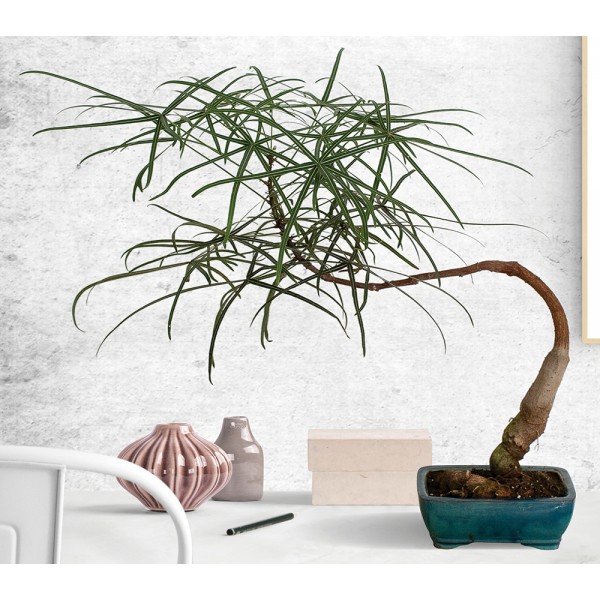The Brachychiton, a captivating representative of the Sterculiaceae family, is a truly intriguing plant native to Australia. It is renowned for its distinctive “bottle” trunk, also known as a caudex, which develops over the years and gives it a unique appearance that captivates plant enthusiasts. Despite its intriguing nature, Brachychiton care is relatively straightforward, making it an excellent choice for both beginner and seasoned plant lovers.
The Distinctive Characteristics of Brachychiton
Most notably characterized by its bottle-shaped trunk, the Brachychiton is a succulent wood plant that thrives both indoors and out. When grown indoors, it typically reaches about 0.5 meters in height, while in its natural habitat, it can rise majestically up to 6 meters. The growth rate of Brachychiton is slow, yet it promises a longevity that rewards patient caretakers with many years of enjoyment.
Ideal Climate and Lighting Conditions
Brachychiton prefers bright sunlight or a slight shadow, fitting perfectly on a sunny south-facing window. In terms of temperature, this plant enjoys warm summers with temperatures climbing up to 95°F. In winter, it requires a period of dormancy with temperatures not dropping below 50°F. Moderate humidity levels suffice, echoing its native Australian environment.
Soil and Drainage Needs
This succulent thrives in well-draining soil with a slightly acidic to neutral pH of 5.5 to 6.5. Commercially available soil mixes for succulents are adequate, but for the enthusiast who prefers to custom-mix their own soil, a blend containing three parts of coarse sand or perlite, two parts garden soil, two parts humus (leafy earth), and additional components such as charcoal, bone meal, and some lime or ground egg-shell prove excellent. Proper drainage is crucial to avoid root rot, a common threat if this plant is overwatered.
Watering Schedule
Brachychiton’s watering routine is pivotal to its health. During the active growth months, the top layer of soil should dry out between waterings, which typically occur every 10 to 15 days. As the plant approaches dormancy in November through February, watering reduces substantially to once a month, with nearly no watering required in December and January.
Nutritional Requirements
Young Brachychiton plants need fertilizers rich in phosphorus to help them establish a healthy root system. For mature plants, a complex liquid fertilizer administered 2-3 times in the summer season supports robust growth. Alternate between a general-purpose fertilizer and one specifically for cacti to ensure all nutritional needs are met.
Propagation Techniques
Propagating Brachychiton can be achieved in a couple of ways. The most effective method involves using pre-soaked seeds, which are placed in a mixture of peat, perlite, and sand, and allowed to germinate in warm, unlit conditions. Germination can take 1-3 weeks, and once seedlings reach about 2.5 cm, they should be dived and transplanted into small pots. Alternatively, cuttings about 12 cm in length can be used. After drying, these are placed in a loose substrate of sand, moss, and perlite, with added fungicide, and covered with a film to maintain humidity.
Challenges and Pests
Brachychiton can sometimes encounter issues such as infestations by spider mites, scale insects, and whiteflies. Overwatering can lead to root rot, while insufficient light can cause it to become leggy and pale. Young plants are susceptible to excess light, which may result in leaf sunburn. Additionally, care should be taken when pruning as the plant’s sap can irritate the skin.
Repotting and Pruning
Young Brachychiton plants benefit from annual repotting in spring, whereas adult plants prefer it every 3-4 years. Use a heavy pot for adults to counterbalance the mass of the trunk. Pruning is occasionally necessary in spring if the plant becomes too elongated, a practice that helps maintain its aesthetic structure. The Brachychiton is also suited for bonsai, offering a creative avenue for plant enthusiasts to explore.
Embracing the captivating charm of a Brachychiton allows plant enthusiasts to enjoy a piece of Australia’s natural beauty right at home. With the right care – accommodating its preferences for light, warmth, and moderate moisture – this incredible plant can thrive for many years, serving as a striking conversation piece and a testament to nature’s diversity.






